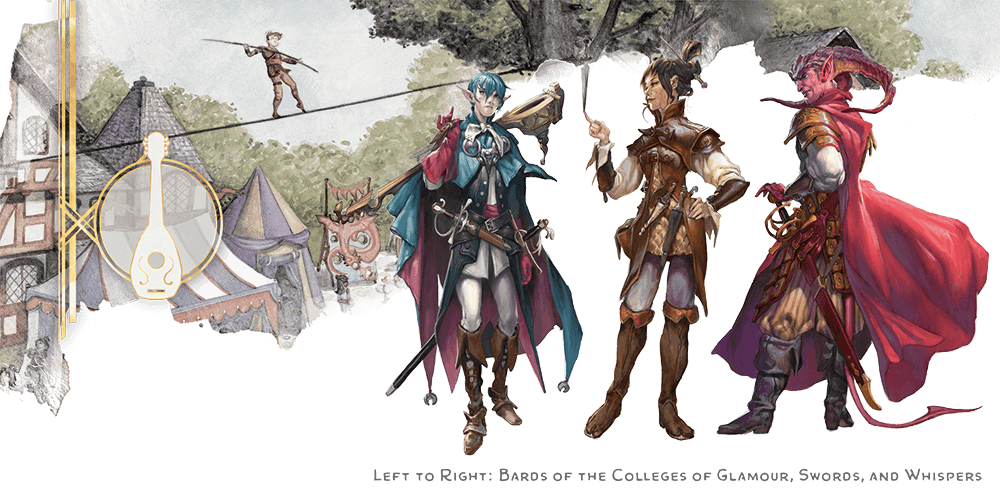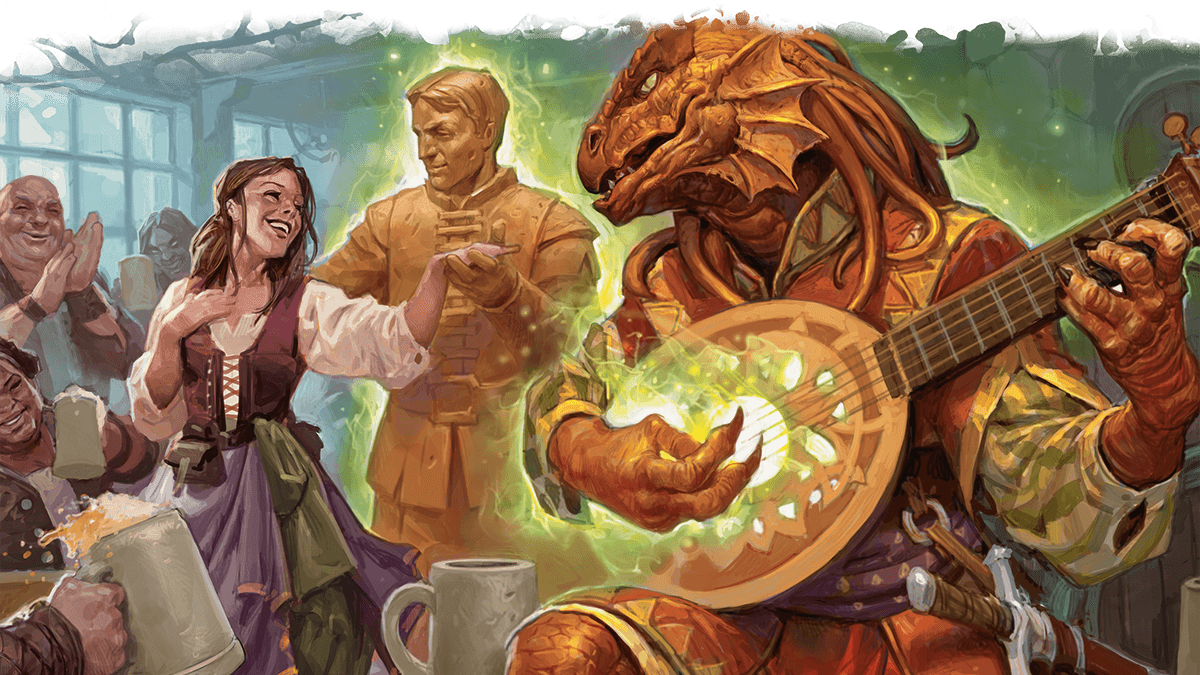Best D&D soundtracks for every scenario: How to pick the perfect songs
5 tips on how to pick the best D&D songs

I love Dungeons & Dragons, but nothing bores me more than the absence of a good soundtrack. I pride myself on my music choices in my D&D campaigns, so I want to talk about how you can easily pick the best D&D soundtracks for every scenario in your own campaign.
Picking the perfect D&D songs for a scenario isn’t as hard as it seems, but it can be time-consuming if you’re as picky as I am. I run my sessions like a drama, so I have music queued for each story beat, but I also have tracks at the ready when my players do something unexpected and there needs to be a tone shift.
Why listen to some dude who writes about laptops for D&D music advice? Well, the soundtracks I select are from hit games like The Witcher 3, Skyrim and even Hollow Knight. If any of these even remotely catches your fancy, then you and I might have similar taste. If none of this is new to you, check out our larger DND Tips page for more advice on D&D 5e and other TTRPGs. Otherwise, I can give you some sweet tips on picking the best D&D soundtracks.
- See our best DND tips right now
- Check out the best virtual tabletop software for your TTRPG games
- How do I engage my players?
Tone is everything
Before you choose what music you want, think about the scenario that you're presenting. This one is relatively easy, as they’re three categories: Roleplay, combat and exploration. Once you decide on that, figure out what kind of tone you want to present to your players. Since D&D is so chaotic, your scene could be a part of all three categories at once, so keep that in mind.

Then you need to determine the tone of the scene. Is the scene in question mysterious or whimsical? Creepy or jolly? Really think about the kind of tone you want to set for your players, as this will give them a push in the right direction on how they should act during the scene. For example, if I want to set a mysterious and creepy tone, I might select “Evil’s Soft First Touches” by Marcin Przybyłowicz from The Witcher 3: Wild Hunt Hearts of Stone soundtrack.
However, you can’t just settle on tone alone. You also need to decide the importance of your scene, which will determine the pacing.
Pacing: Figure out the weight of your scene
If you’re setting up a combat scenario, you can’t just play any battle track you find. You need to focus on the pacing of the track and if that fits with the encounter.
Sign up to receive The Snapshot, a free special dispatch from Laptop Mag, in your inbox.

If it’s a small encounter, pick a more subtle combat track, like “Cloak And Dagger” by Percival from The Witcher 3: Wild Hunt soundtrack. But if it’s a final boss, you can go nuts with a wild song like “Slave Knight Gael” by Yuka Kitamura from the Dark Souls 3 soundtrack.
When you’re looking for a suspenseful track, you’ll find some that are slow and others that are fast-paced, and so those change the kind of scenes they’d be used for. The former I’d use in a roleplay encounter with a villain, while I’d use the latter in a chase scene.
As a note, I rarely use songs from Dark Souls games because they’re too bombastic, and you want to err on the side of subtlety with your tracks.
The stars of the show are the players
With D&D, and most TTRPGs, you don’t know if a scene is going to last two minutes or two hours because players are unpredictable and you don’t know what will catch their attention in the moment. With that in mind, you want to pick soundtracks that are nuanced and don’t feature repetitive beats.

The soundtracks you select should give off an atmospheric vibe. If you’re trying to go for a mysterious tone, a great example of a subtle song is “Silent Footsteps” by Jeremy Soule from the Skyrim soundtrack. The key takeaway from listening to this song is that it can loop for hours and I won’t even notice.
Therefore, it’s important to listen to a song in its entirety when scouring Spotify or whatever music library you use, though this can make finding music all that more time consuming. You’ll want to be on the lookout for any loud stings or wild crescendos that lead into the bombastic parts of the song. Those are the songs you should avoid, as it’s too easy to recognize the beginning and end, which makes them annoying during long listening sessions.
When to press play
Like I said, D&D is a chaotic world, so when you want the soundtrack to shift it can be difficult to suss out, especially when players go off on their own. Apart from having a ton of songs at the ready, the best advice is to not use two bullet points of planning per session. Trust me, I know it’s hard.

Think of your campaign like a video game. I set up a specific track for my recap, each area, important story beats, character introductions and, of course, combat scenarios. Just like a video game has a track for each situation, I like to set tracks for everything. I especially think it’s a good idea to use the same track for particular areas because it makes it more memorable and your players can associate that song with an area you made.
Depending on the software you use, audio transitions may not be seamless. If you’re looking for a solid software for music, my current personal favorite is Foundry VTT. The virtual tabletop software lets me play multiple songs at the same time, so I can DJ songs into a smooth transition.
My favorite D&D soundtracks
If you’re having trouble with where to start looking, I have several suggestions and one method I use to find songs. Firstly, if I’m not sure what soundtrack I want to pull from but I’ve at least figured out the tone, I’ll search “Dnd [input tone here]” on Spotify. There are tons of playlists already created by other Dungeon Masters to help you out.
However, I typically peruse the same set of soundtracks from these games: The Witcher 3: Wild Hunt, Pillars of Eternity, Hollow Knight, God of War, The Elder Scrolls Online, Oblivion, Skyrim, and Horizon Zero Dawn.
During all of my recaps in my campaign, I play peaceful but foreboding “Fate Calls” by Mikolai Stroinski from The Witcher 3: Wild Hunt. When introducing a new whimsical city to my players, I played “Greenpath” by Christopher Larkin from Hollow Knight. When my players fought a mysterious ancient blue dragon in the skies above the ocean, I played “The Dragon” by Bear McCreary from God of War. After a long fought battle, my players entered a tavern and I played “Out of the Cold” by Jeremy Soule from Skyrim. As my players were traveling and talking about the dangerous events to come, I played the somber “Twin Elms” by Justin Bell from Pillars of Eternity.
That’s just a small taste of my library, but if you’re interested, you can check out my personal D&D Spotify playlist below that I consistently update with new songs for my games:

Rami Tabari is the Reviews Editor for Laptop Mag. He reviews every shape and form of a laptop as well as all sorts of cool tech. You can find him sitting at his desk surrounded by a hoarder's dream of laptops, and when he navigates his way out to civilization, you can catch him watching really bad anime or playing some kind of painfully difficult game. He’s the best at every game and he just doesn’t lose. That’s why you’ll occasionally catch his byline attached to the latest Souls-like challenge.
